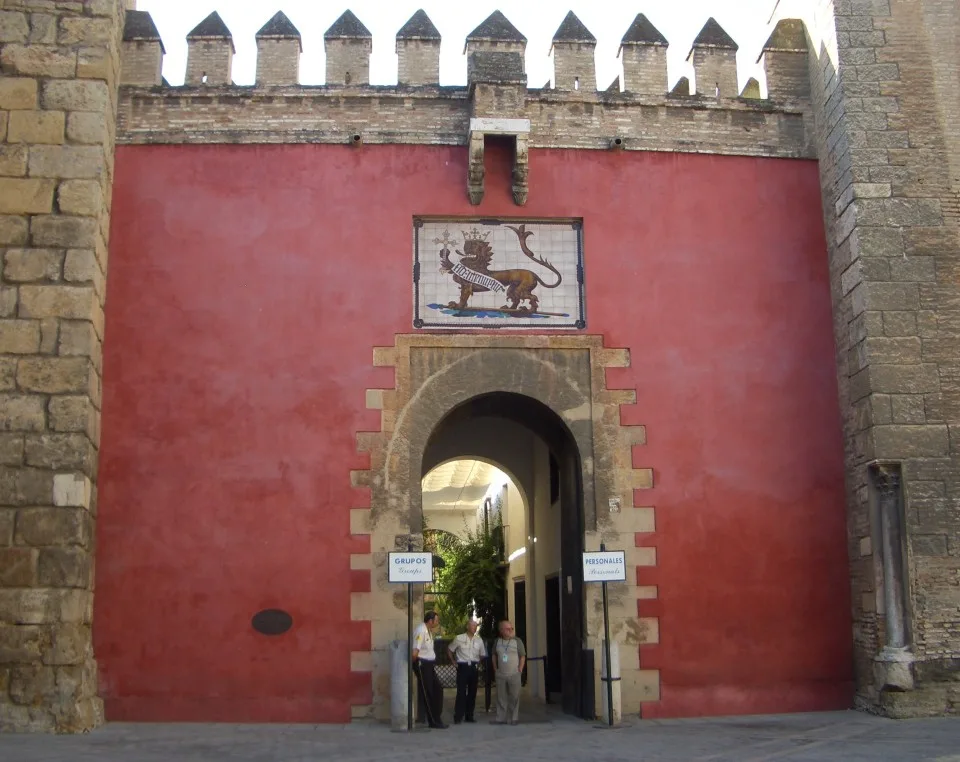 Seville is the fourth largest city in Spain and is considered the most “Spanish” city in the entire country. When I think of Spain, I almost always think of its famous flamenco dance, the tradition of bullfighting, and how sultry or hot the city feels as the Spanish guitars play late into the night! In fact, I find that Sevillanos are always happy to share their love of tradition, history, and culture with others. Seville is also an exceptionally religious city as there many cathedrals and churches that represent the Catholic religion.
Seville is the fourth largest city in Spain and is considered the most “Spanish” city in the entire country. When I think of Spain, I almost always think of its famous flamenco dance, the tradition of bullfighting, and how sultry or hot the city feels as the Spanish guitars play late into the night! In fact, I find that Sevillanos are always happy to share their love of tradition, history, and culture with others. Seville is also an exceptionally religious city as there many cathedrals and churches that represent the Catholic religion.
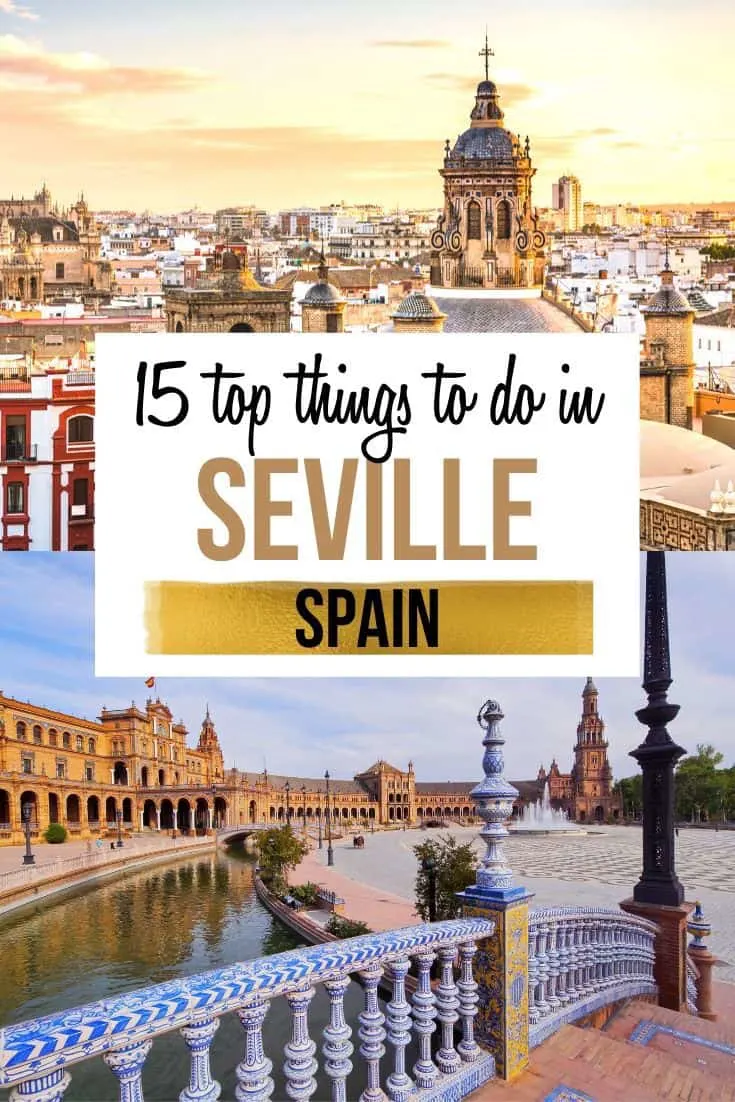 Best Time to Visit Seville
Best Time to Visit Seville
I recommend visiting Seville from March to May. The spring is a great time to catch the local festivals, avoid the busy crowds, and escape the humid summer weather. Also, hotel rates are lower! During this time is when the Semana Santa and Feria de Abri Festivals take place, thus giving the city an energetic and unique vibe. It truly is the best time to experience Seville.
If you visit from June to September, it may be scorching hot, as Seville records some of its highest temperatures during this time. The weather can become very dry without much wind and the temperature highs can get as high as 105 degrees Fahrenheit. So be aware of the temperatures!
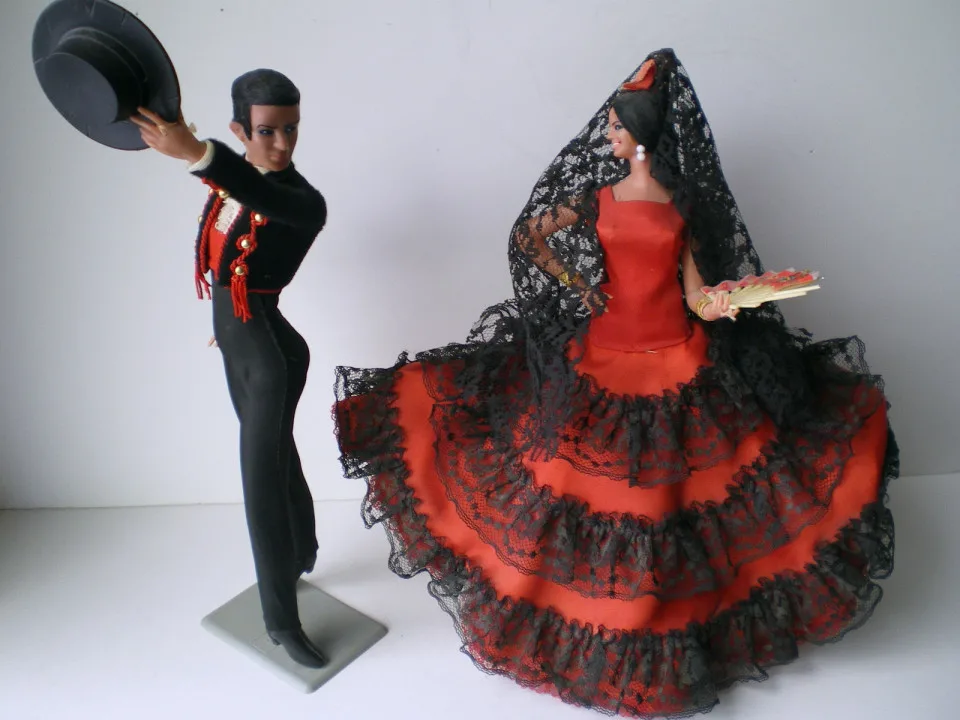
When I was a little girl, my world-traveling grandmother came home from Spain and brought me two Spanish flamenco dancer dolls: the female in her blazing red dress and the male in his traditional black pants, a shirt, and short vest. It was a set that came with a toro (bull). I was mesmerized by what these Spanish dolls could mean. Seville, it intoxicates by merely the name, the sound of its words. It is a destination for passions, of which it has two famous ones: Flamenco and Bullfighting!
Where to stay in Seville
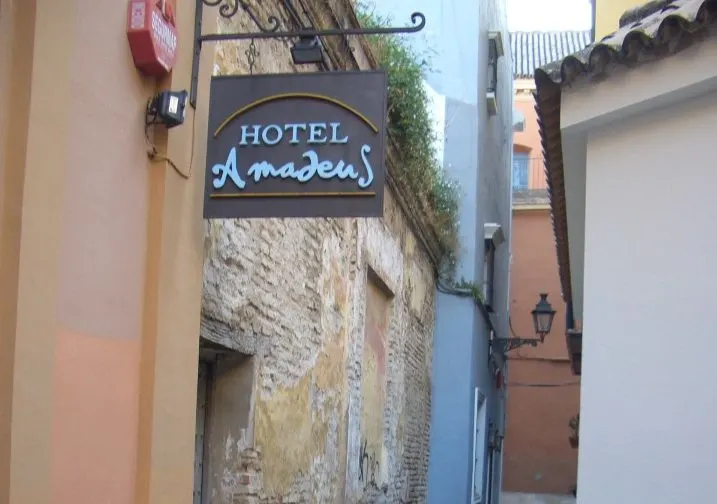 While in Seville, we stayed at the Hotel Amadeus, a small boutique hotel that resembles a mansion, rather than a hotel on the inside. On the outside, you wouldn’t even know it was there, so hidden within the cobblestone streets of Seville. It is located in the Barrio de Santa Cruz neighborhood. All the rooms are named after classical composers, which I thought was original! The location is perfect for walking and within walking distance to the Alcázar and the Giralda Cathedral.
While in Seville, we stayed at the Hotel Amadeus, a small boutique hotel that resembles a mansion, rather than a hotel on the inside. On the outside, you wouldn’t even know it was there, so hidden within the cobblestone streets of Seville. It is located in the Barrio de Santa Cruz neighborhood. All the rooms are named after classical composers, which I thought was original! The location is perfect for walking and within walking distance to the Alcázar and the Giralda Cathedral.
Now, let’s take a step back from our busy lives and hectic schedules to enter the world that gave us Flamenco music, bullfighting, amazing works of art, and more. You are about to go on a virtual trip to Seville, Spain. Keep reading as I have come up with the 15 top things to do in Seville.
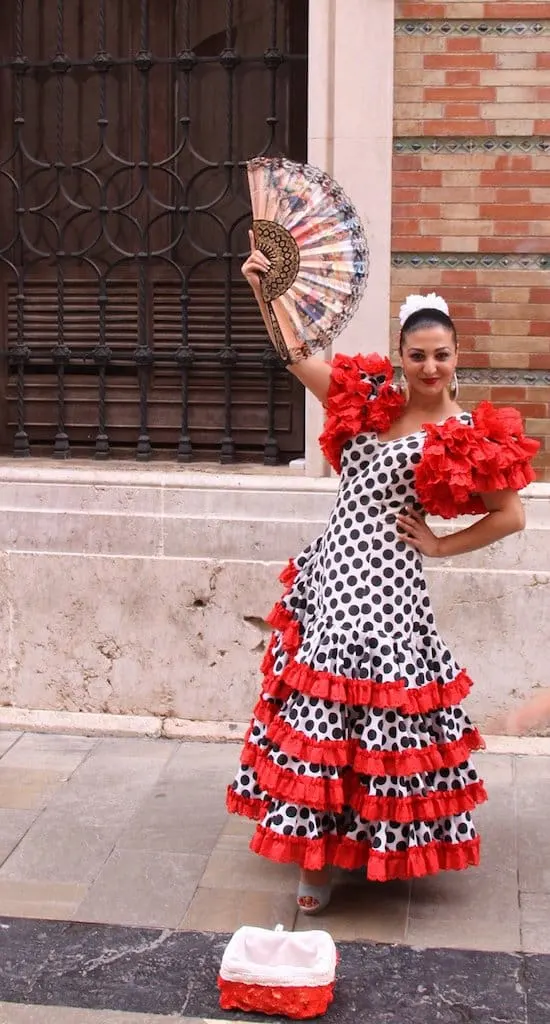
15 top things to do in Seville
#1 Take a guided tour of the Real Alcázar
What is an Alcázar? Via Wiki: “An alcázar (English: /ˈælkəzɑːr/; see below) is a type of Moorish castle or palace in Spain and Portugal built during Muslim rule, although some were founded by Christians and others were built on earlier Roman or Visigothic fortifications.”
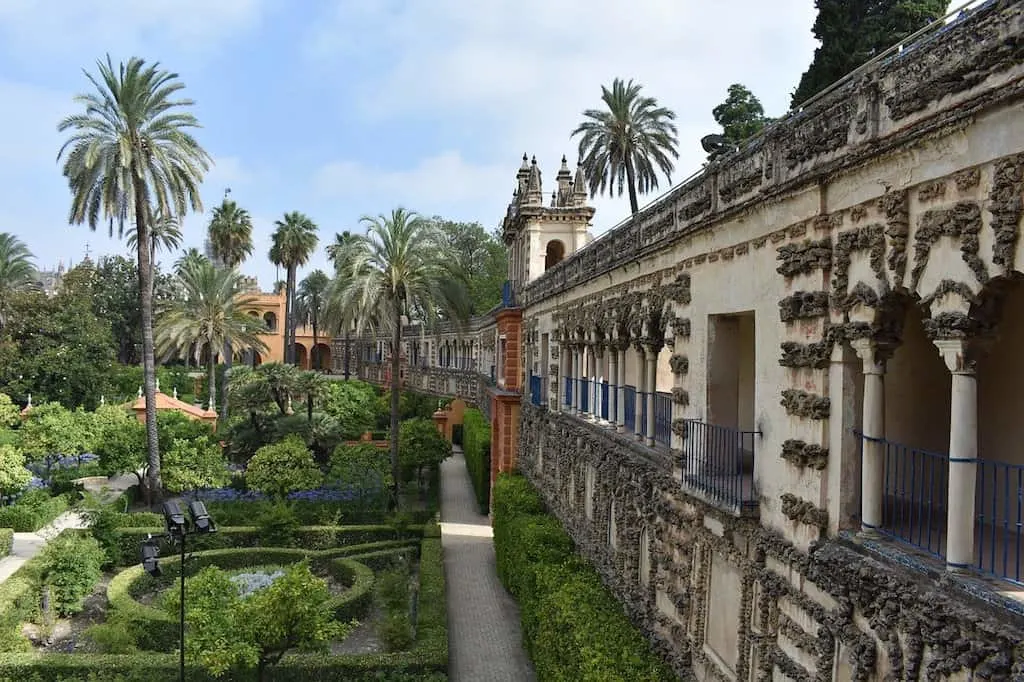
Visiting this UNESCO World Heritage site should be at the top of your list of things to do in Seville. This gorgeous palace dates back to 913 and is one of the older palaces in use today. Many rulers occupied the palace and each one added their own unique buildings, which make up the palace as we see it today.
The entryway of this palace is through the stunning Lion Gate which lies in front of the Plaza Triunfo. Once inside the Alcázar, you will admire at beautiful tapestries and intricate murals. The most famous feature of this palace is the Baths of Lady Maria de Padilla. As you head to the exterior you are sure to notice beautiful green gardens, orange trees, exquisite fountains, and courtyards.
Click here if you want to purchase a ticket to the Alcázar or click here to skip the lines at the Alcázar (& the Cathedral of Seville) or here if you want the fast access tour of the Alcázar.
#2 Go Authentic Tapas Bar hopping
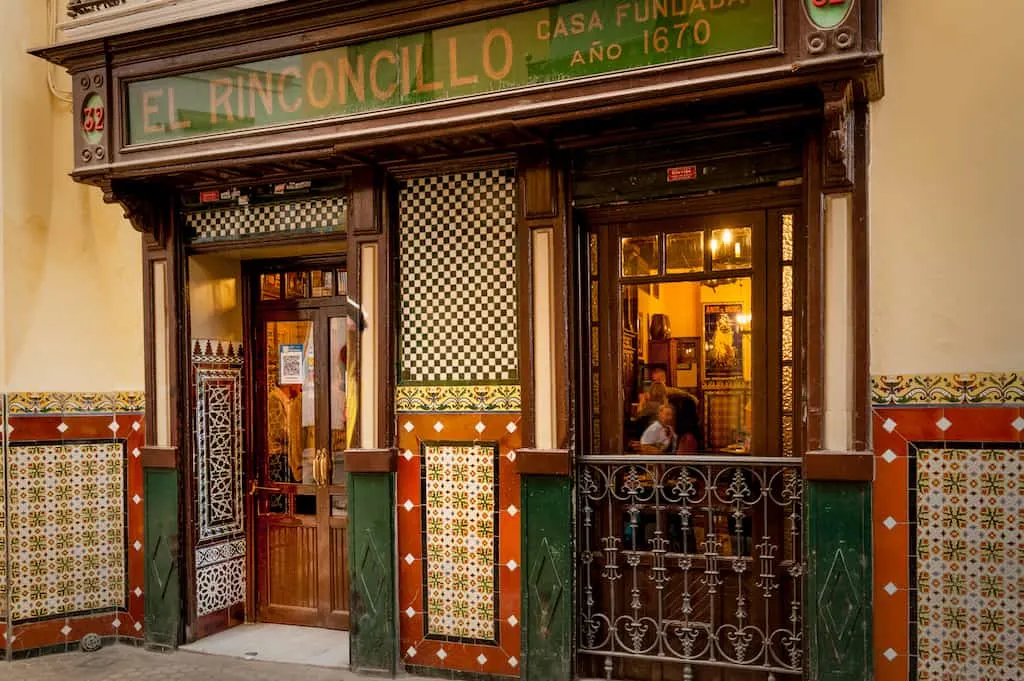 One of the most famous and crowd favorite tapas bar is La Brunilda on Calle Galera. Here you can order patatas bravas, shrimp with garlic, and ham croquettes. Also, check out El Rinconcillo that has been around since 1670 and considered the most ancient bar in Seville! It is over on Gerona and Alhóndiga Streets, due to the fact that the De Rueda family about an adjacent house and had the two linked together! The De Rueda family has preserved the original essence of the taverna over time and this is a popular corner in Seville for a tapas bar. Click here if you want to go on an authentic tapas crawl.
One of the most famous and crowd favorite tapas bar is La Brunilda on Calle Galera. Here you can order patatas bravas, shrimp with garlic, and ham croquettes. Also, check out El Rinconcillo that has been around since 1670 and considered the most ancient bar in Seville! It is over on Gerona and Alhóndiga Streets, due to the fact that the De Rueda family about an adjacent house and had the two linked together! The De Rueda family has preserved the original essence of the taverna over time and this is a popular corner in Seville for a tapas bar. Click here if you want to go on an authentic tapas crawl.
#3 Take in a Flamenco show
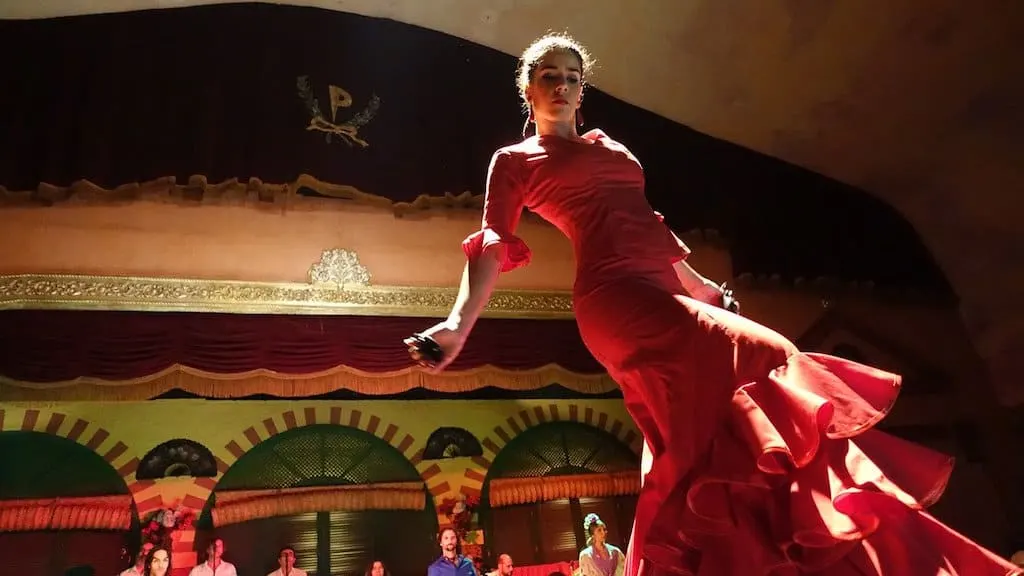 While in Seville, you cannot miss the chance to catch a feisty Flamenco Show. In fact, it is one of my favorite things to do! The Flamenco is a well-known dance in Spain and includes graceful motions, lots of heel-tapping, and sensual movements. Click here to check out shows in Seville and have exclusive access to Flamenco centers. You too can learn the art of the Flamenco by taking a class at El Museo del Baile Flamenco.
While in Seville, you cannot miss the chance to catch a feisty Flamenco Show. In fact, it is one of my favorite things to do! The Flamenco is a well-known dance in Spain and includes graceful motions, lots of heel-tapping, and sensual movements. Click here to check out shows in Seville and have exclusive access to Flamenco centers. You too can learn the art of the Flamenco by taking a class at El Museo del Baile Flamenco.
While red-flamed dressed dancers or hot pink flowing souls move around the floor with fierce eyes, stomping their feet on the stage, the men wail in song to the Spanish guitar. These are the sounds of Seville, famous for its tapas and dance. They will not disappoint. Simply the sound of the wailing gets you to understand the suffering of their souls. On the stage, the music and dance is a form of expression for the poor and the oppressed. In the 16 century, Gypsies, Moors, Jews, and indigenous Andalusians influenced the creation of what is known today as Flamenco.
Tablao El Arenal Flamenco Show
Tablao El Arenal is my favorite flamenco show, and you can purchase tickets here. There are many ticket options that include a show with tapas, a show with dinner, and a show with a drink. Choose the show with the drink, as you will not be there for the food, the show will intoxicate you enough. You will be drawn in, as tightly as they wish you to be. Sit back, drink, and forget about your worries for an hour and a half of bliss. Typically the shows offer two nightly shows in their central Seville location. It is highly recommended to get into the Spanish state of mind.
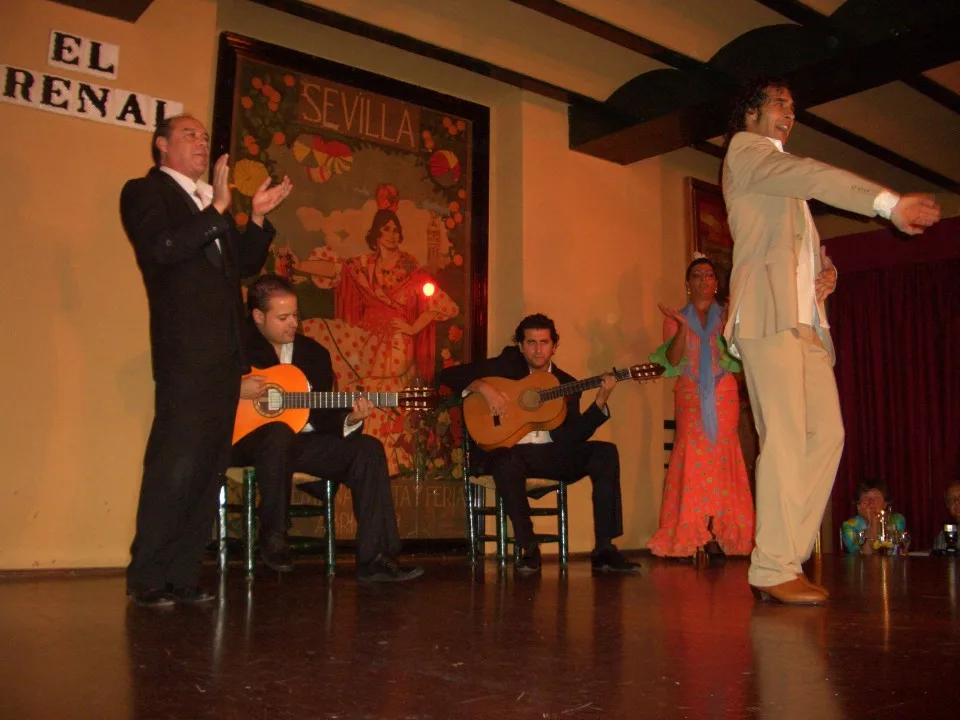
#4 Check out the Orange Trees
Taking in the intoxicating smell of the Sevillian orange trees is one way to spend a glorious morning in Seville. During the age of the Moors, these iconic oranges were used for medicinal purposes, cooked in savory meals, used to make sweets, added to wine, and used as perfumes. Not much has changed today, as these bitter oranges are still being used as they were in the middle ages. You can spot one of the 25,000 orange trees as you walk throughout Seville.
#5 Go on a Guadalquivir River Cruise
Many people love to admire the Seville monuments, Cathedrals, and plazas, but they forget to visit the river that runs through the heart of this beautiful city. The departure point of the cruise is near the Torre del Oro. Guests can hop on a 1-hour boat ride that passes by the Teatro de la Maestranaz, the 1929 Casino de la Exposicion, the Puente de Isabel II, the District of Triana, and the 1992 Pabellon de la Nevegacion.
#6 Check out the Plaza de Toros and Take in a Bullfight
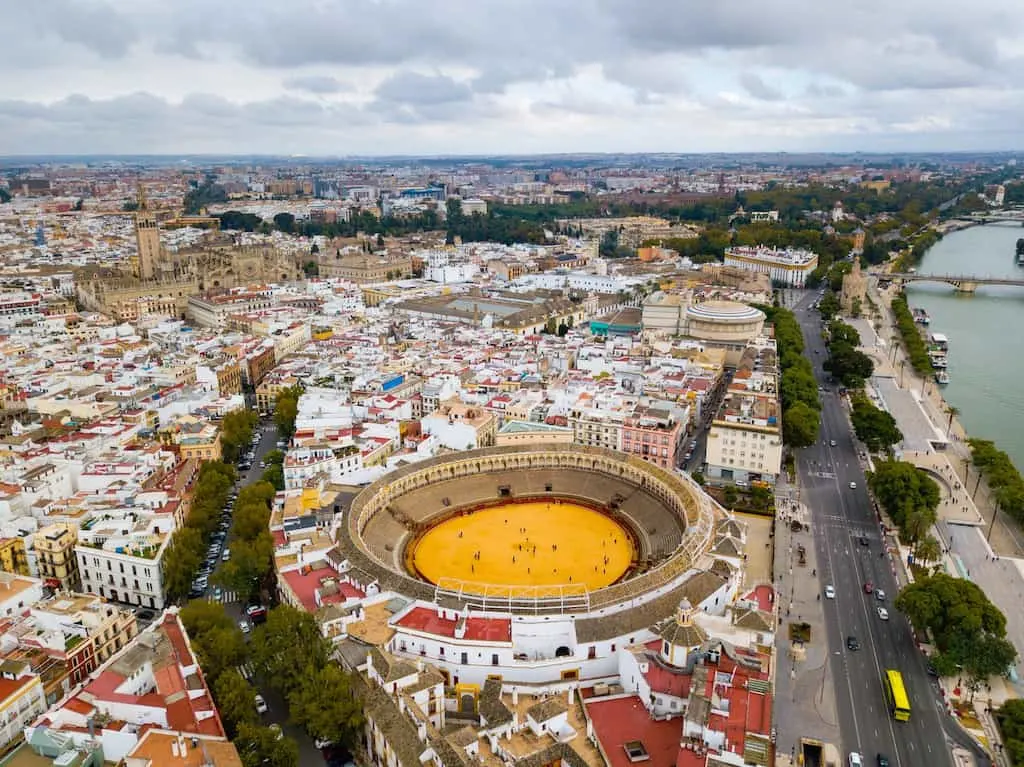
Spanish bullfights at the 14,000 seat Plaza de Toros Maestranza is a truly traditional activity that guests and locals alike love to enjoy. Construction of the famous indoor bullring began in 1730 and was finally completed in 1881. Many architectural changes were made to this bullring, with the last change made in 1915 by Anibal Gonzalez. It went from a stone bullring to a brick one. If you choose to go on a guided tour, you can even go into the bullring.
#7 Visit the Torre del Oro (Gold Tower)
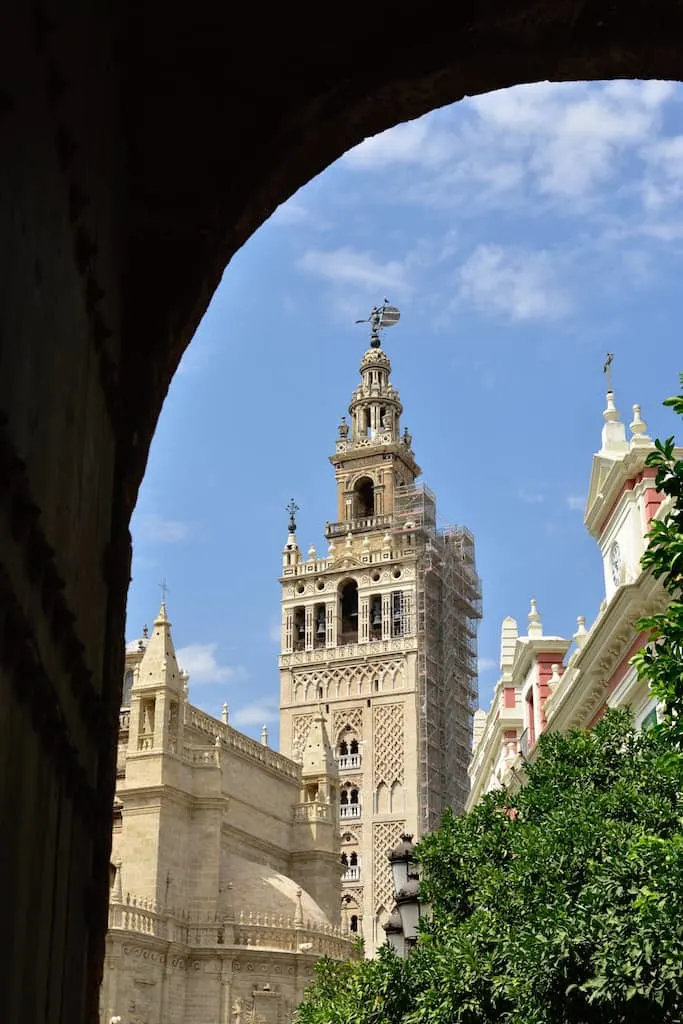
This tower originally dates back to the 13th century and was used as a prison throughout the Middle Ages. The fortified walls of this tower are located near the river Guadalquivir. Guests can climb to the top of the roof terrace and admire the view of the city. In 1944, a museum opened inside the tower to commemorate the overseas discoveries, flags, and other naval equipment from preceding years.
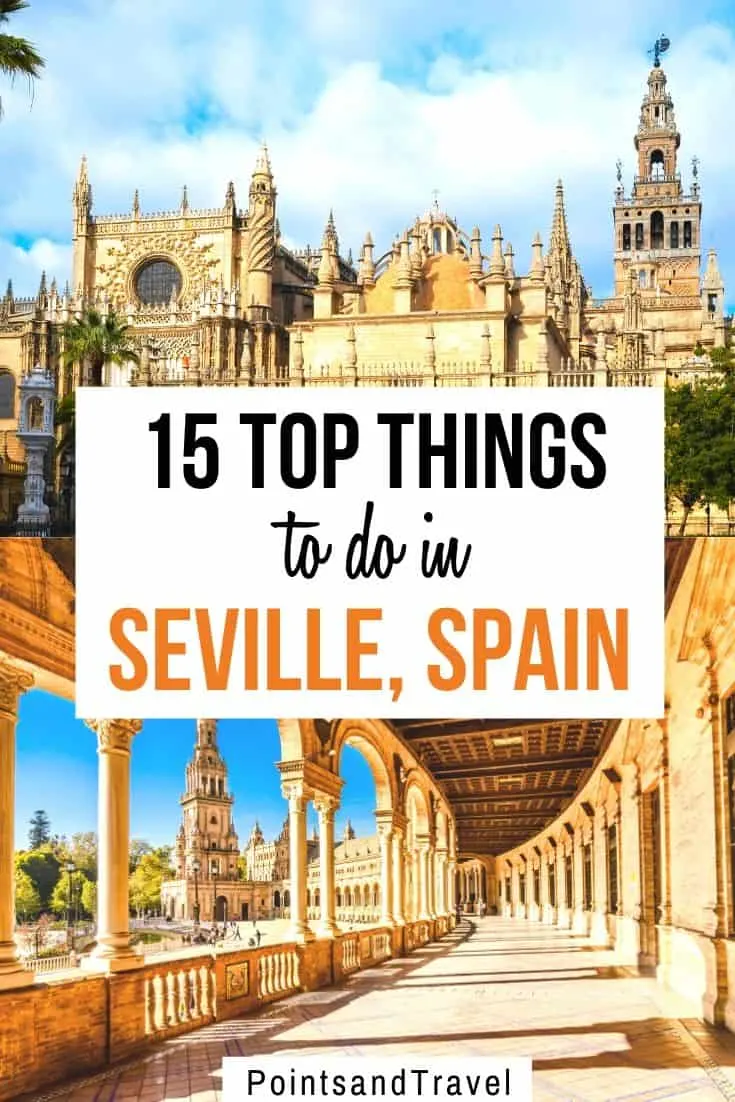
#8 Visit the Seville Cathedral
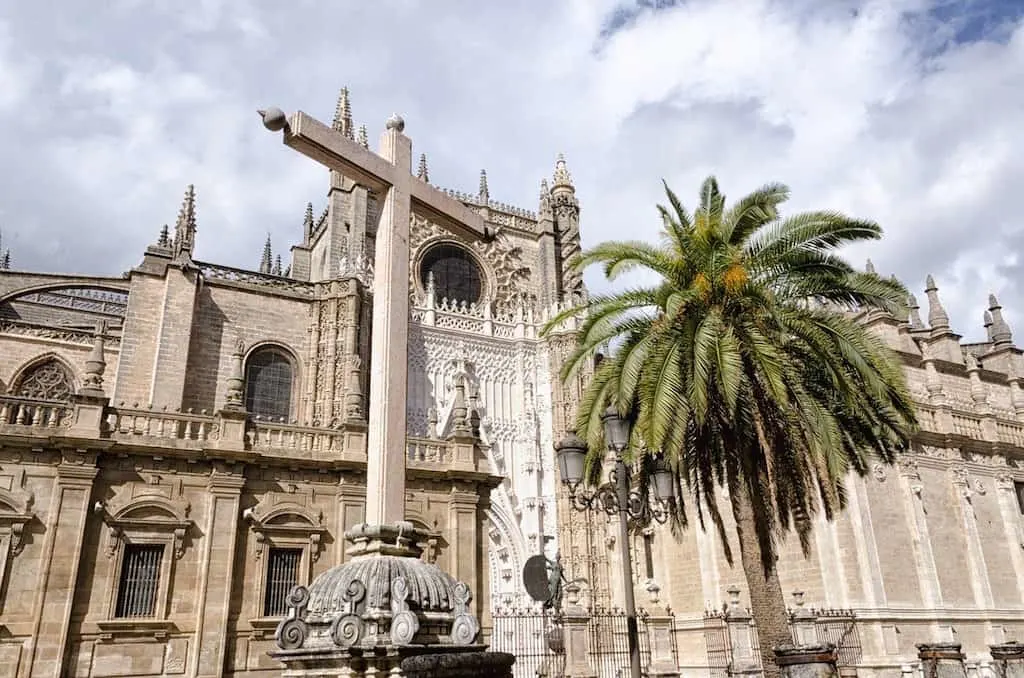
The Catedral de Santa Maria de la Sede, otherwise known as Seville Cathedral, is one of the largest churches in the world and the most famous attraction in Seville. This Cathedral was built in the 15th century and stands at over 443 feet long and 328 feet wide. This historical beauty was named a UNESCO World Heritage Site in 1987. Upon entering this cathedral, you will instantly notice the ornate domes, sculptured walls, and breathtaking stained windows. The vaulted ceilings are unique and memorizing. There are hundreds of tiny sculptures and stunning antique artworks on display. Guests will immediately notice the main altar (which depicts the life of Jesus) which is closed off behind iron bars.
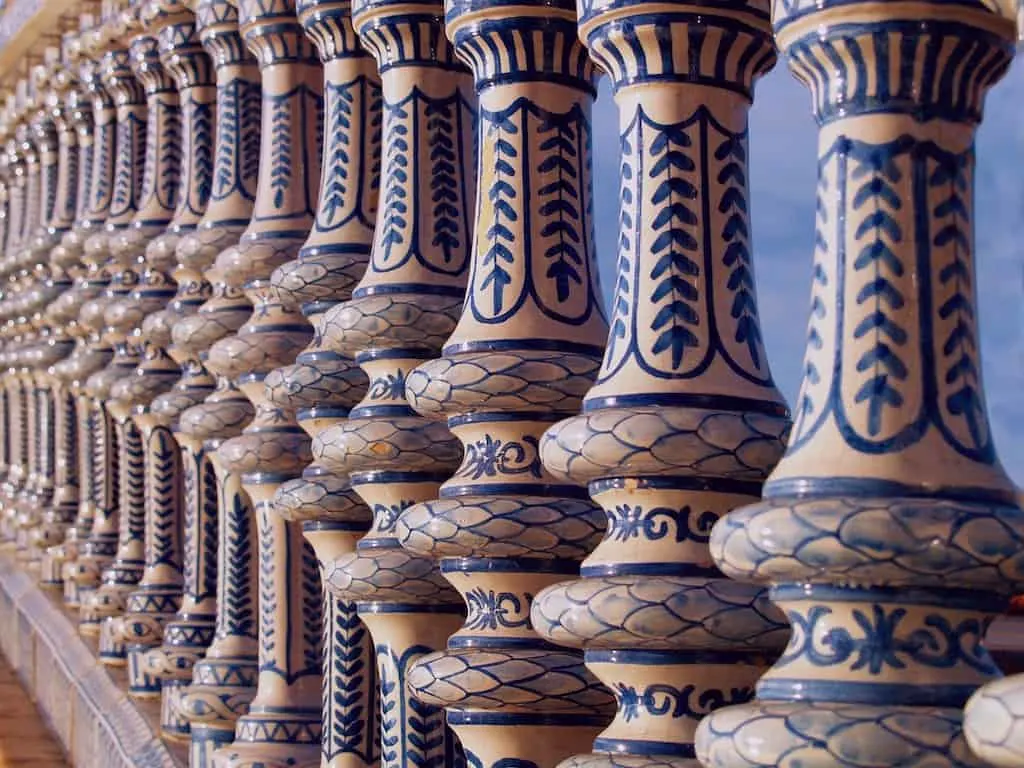
#9 Visit the Tomb of Christopher Columbus
You won’t have to go far from the Seville Cathedral to visit the tomb of this great explorer. The tomb of Columbus is carried by the statues of four men inside the Seville Cathedral. The four men are said to represent the four different kingdoms that reigned during Columbus’ lifetime: Castille, Aragon, Leon, and Navara. Colombus’ body was moved from Valladolid, Spain to Santo Domingo, then Cuba and finally, the tomb was added to the cathedral in 1899 by sculptor Arturo Melida.
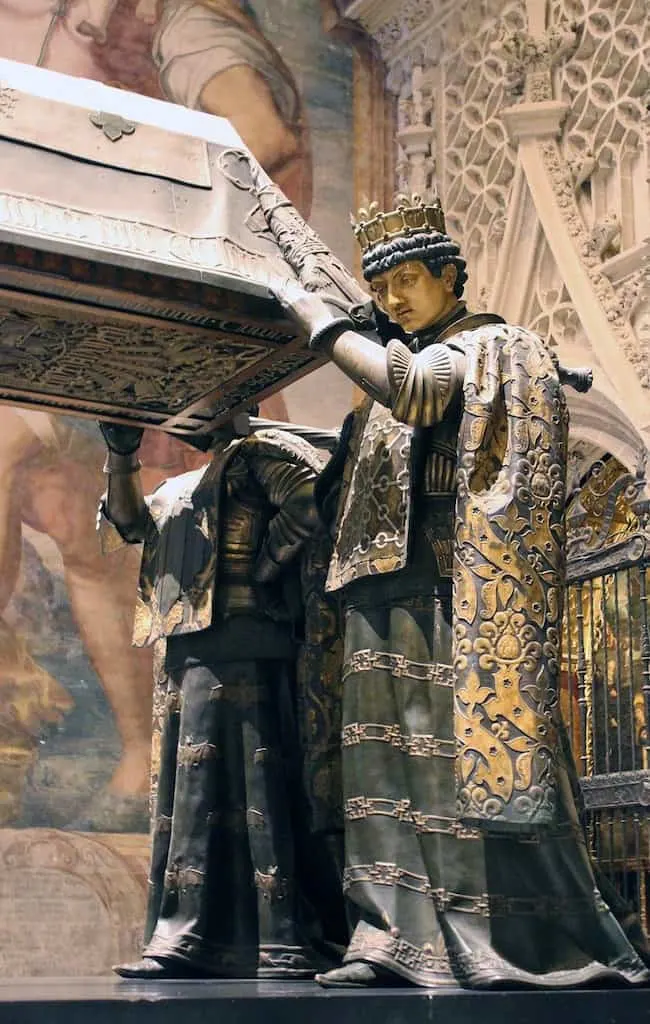
#10 Walk around the Santa Cruz neighborhood
During the reign of King Fernando III, these medieval streets and houses used to be home to the Muslim and Jewish populations. Nowadays, this quarter is home to some of Seville’s oldest churches – Patio de Banderas, Hospital de Los Venerables, and the Plaza de Santa Cruz.
#11 Admire La Giralda Tower
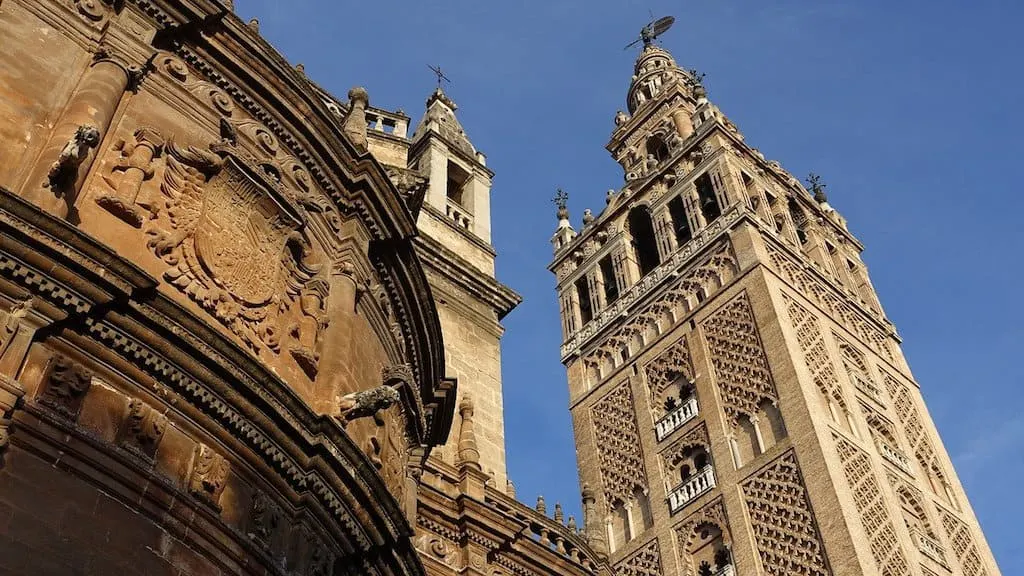 And don’t forget to stroll through the narrow streets to the Giralda Cathedral and Tower. What was once premeditated to be a minaret of a mosque is now the Giralda Tower. The views from the top of the tower allow visitors to see a panoramic view of Seville at 342 feet in the air. The different styles of architecture such as Moorish, Gothic, and Renaissance, spread throughout the city can easily be seen from the top of this tower.
And don’t forget to stroll through the narrow streets to the Giralda Cathedral and Tower. What was once premeditated to be a minaret of a mosque is now the Giralda Tower. The views from the top of the tower allow visitors to see a panoramic view of Seville at 342 feet in the air. The different styles of architecture such as Moorish, Gothic, and Renaissance, spread throughout the city can easily be seen from the top of this tower.
#12 Experience the Feria de Abril
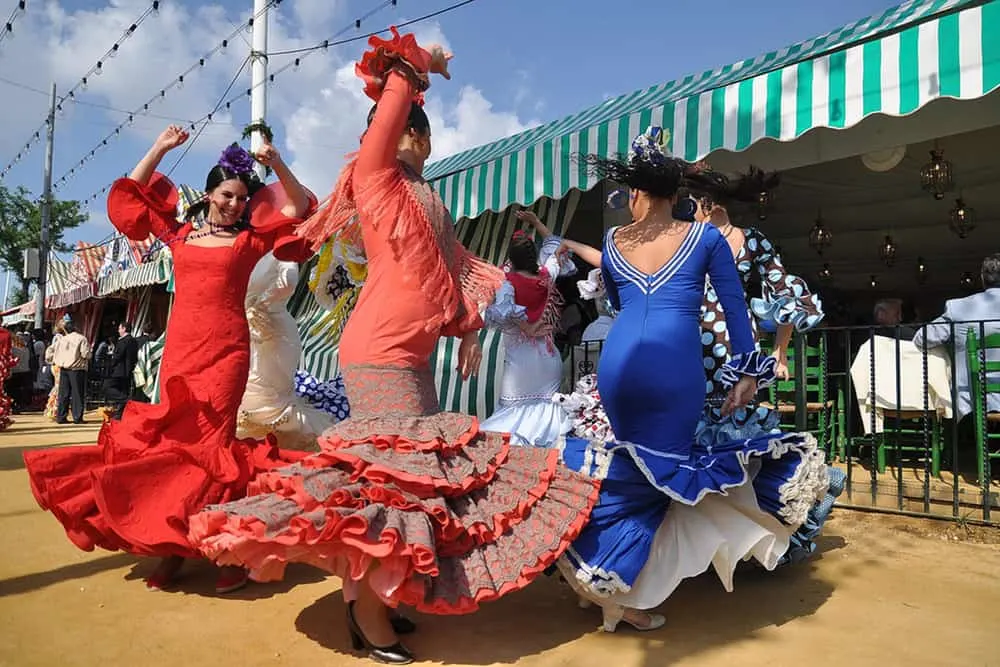 If you are lucky enough to be in Seville in April, then you cannot skip the traditional Seville Fair. This fair occurs two weeks after Easter and runs for a week. This fair has been a part of Sevillano culture since April 1847, when the first fair was held at Prado de San Sebastian. As visitors walk through the fair, they will see things such as amusement rides, Flamenco dancers, tapas tents, and hundreds of casetas (small houses with wooden furniture).
If you are lucky enough to be in Seville in April, then you cannot skip the traditional Seville Fair. This fair occurs two weeks after Easter and runs for a week. This fair has been a part of Sevillano culture since April 1847, when the first fair was held at Prado de San Sebastian. As visitors walk through the fair, they will see things such as amusement rides, Flamenco dancers, tapas tents, and hundreds of casetas (small houses with wooden furniture).
#13 Walk around the Plaza de Espana
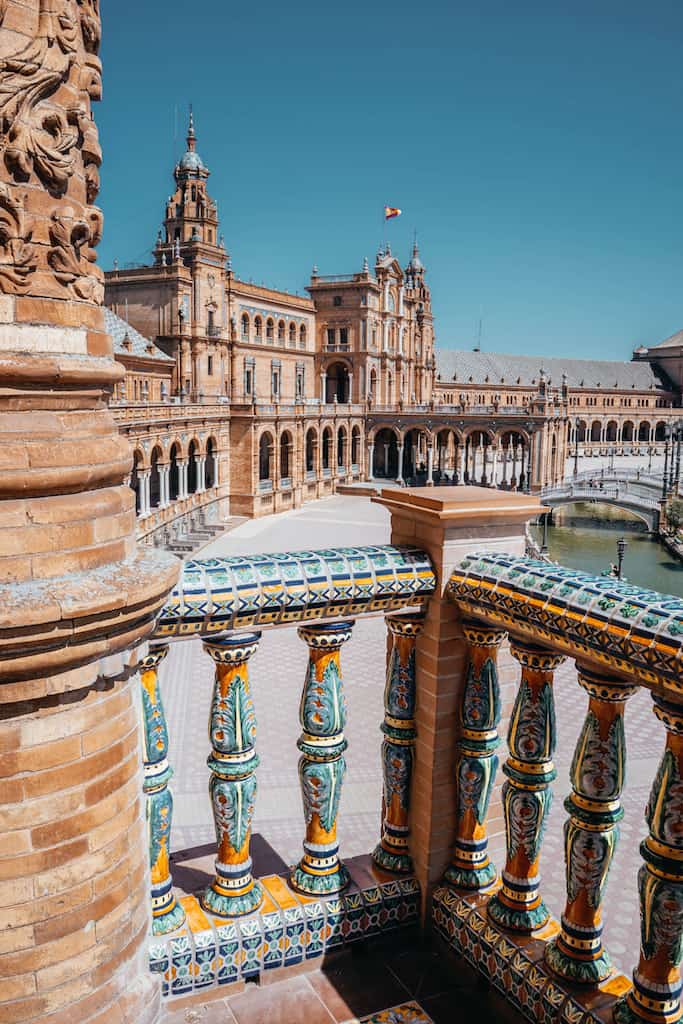 This Spanish square is located in Maria Luisa Park. The park was built in 1928 by Anibal Gonzalez. At the center of this plaza is the Vicente Traver fountain. Restoration throughout the years has included additions to the plaza, such as the Government buildings.
This Spanish square is located in Maria Luisa Park. The park was built in 1928 by Anibal Gonzalez. At the center of this plaza is the Vicente Traver fountain. Restoration throughout the years has included additions to the plaza, such as the Government buildings.
#14 Explore the Museo de Artes
The old Barefoot Convent of Mercy was transformed into the Museum of Fine Arts of Seville in 1839. The artwork housed in this museum includes works from Francisco de Zurbaran, Bartolome Esteban Murillo, Valeriano Bécquer, and Valdes Leal. You will find this museum at the center of the Plaza del Museo. The entrance of the museum captures a stunning bronze statue by Bartolome Esteban Murillo.
#15 Eat the Best Churros in Seville at Churreria los Especiales
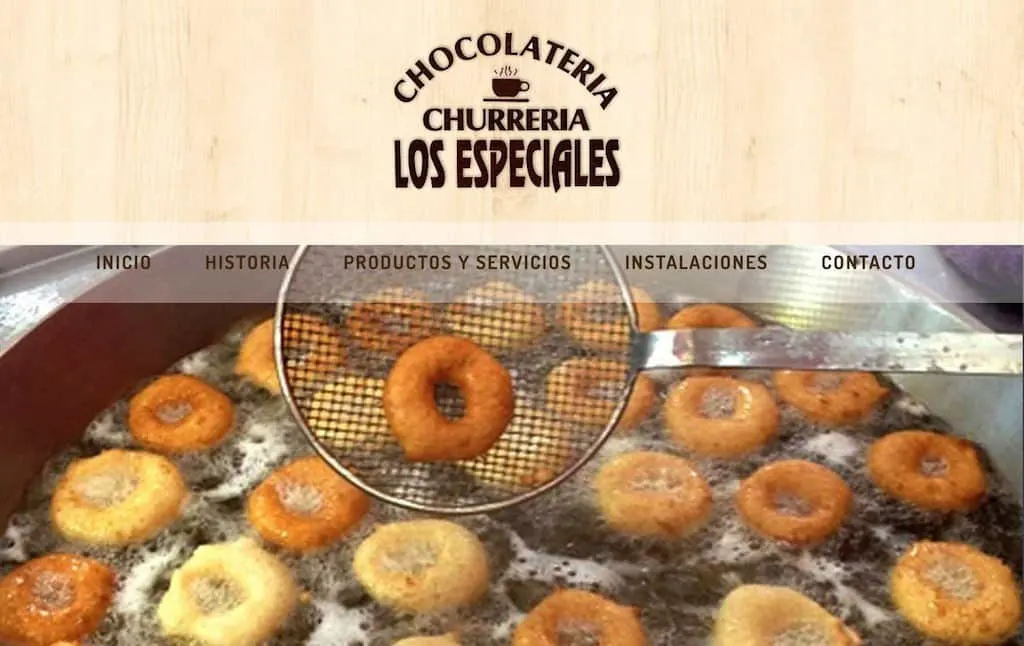 The Chocolateria Chuerreria “Los Especiales” is a family-owned business that began in 1975. However, Francis0 Sanchez Gomez mastered the art of churros during the 1950s. This amazing company produces churros and chocolate for weddings, private events, and even for the Seville Fair. You must try their chocolate-filled churros, chocolate-dipped churros, wheel churros, and filled bites.
The Chocolateria Chuerreria “Los Especiales” is a family-owned business that began in 1975. However, Francis0 Sanchez Gomez mastered the art of churros during the 1950s. This amazing company produces churros and chocolate for weddings, private events, and even for the Seville Fair. You must try their chocolate-filled churros, chocolate-dipped churros, wheel churros, and filled bites.
Hopefully, you were able to get a clear picture of Seville, Spain as you read through the list things to do in Seville. From the amazing monuments to the authentic Flamenco show and tasty food, Seville has something for everyone to enjoy.
Hasta la próxima ves, mi Seville, (Until the next time, my Seville.)


